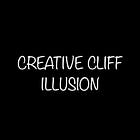Atomic Knowledge #14: Active Learning
Active learning turns every experience into a catalyst for transformation
⏱️ Reading Time ≈ 1 min
Active learning is a framework where continuous, incremental, and proactive learning forms the foundation for individual and organizational success. It transforms education by shifting from passive reception to active engagement, applicable in every life situation. Its core lies in a cyclic process involving priming (exposure to new ideas), practising (applying knowledge, e.g. through mini-experiments), and reframing (reflecting on feedback to refine understanding). Rooted in constructivist theories by Dewey, Piaget, and others, this model is especially vital amid rapid technological and cultural shifts. On a personal level, active learning fosters critical thinking, self-directed growth, and adaptability by embedding learning into everyday experiences. At the organizational level, it drives innovation by establishing feedback loops and structured processes (such as IDPs, mentoring, and action learning) that transform collective practices and spur agile adaptation. By integrating these principles into daily routines and strategic frameworks, active learning not only empowers individuals to continuously evolve but also builds resilient organizations capable of navigating change.
Active learning is the transformational engine that converts every experience into a strategic catalyst for growth, empowering individuals and organizations to thrive in an ever-changing world.
Make the most of it! Until next time, S.
Deepen Your Knowledge
Choi, 2006 - Organisational Active Learning: Implications for Innovation Adoption and Implementation (paper, doi)
Dewing, 2009 - Moments of Movement: Active Learning and Practice Development (paper, doi)
Martinez, Gomez, 2025 - Active Learning Strategies (paper, doi)
Active Learning - Wikipedia (article)
Novak, 2024 - How Leaders Learn (link to my review of the book)
Previously on Atomic Knowledge
Whenever I encounter an interesting concept—whether it’s a theory, speculative idea, formula, or law—I strive to deeply understand it and see how it connects within my knowledge network. Once I’ve grasped its essence, I distill it into a concise, no-frills note: simple, atomic, and memorable. To keep things sharp and focused, I stick to a “lazy” limit of 1,000 characters, give or take. These atomic notes, often described as mental models, have revolutionized how I understand and link ideas, fostering a more organic and interconnected expertise. Believing in the power of sharing, I’ve decided to make them public. Think of these notes as tools: mental models to keep in your back pocket for quick use or prompts to deepen your understanding when inspiration strikes. Subscribe if you’re curious—you won’t want to miss them.









